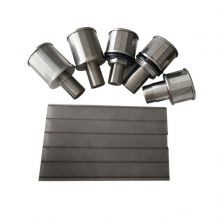Self-Cleaning Irrigation Water Filters
USD $1 - $1000 /Set
Min.Order:1 Set
Quick Details View All >
Hebei YUBO Filtration Equipment Co., Ltd.
Product Details
One of the critical components of successful agriculture is irrigation, which ensures that crops receive the water they need to thrive. However, using untreated or impure water for irrigation can have detrimental effects on crops and the environment. Self-cleaning irrigation water filters have emerged as a groundbreaking solution to this problem.
The Importance of Self-Cleaning Irrigation Water Filters
Clean irrigation water is essential for the health and productivity of crops. Using water contaminated with sediment, debris, or microorganisms can lead to clogged irrigation systems, reduced water flow, and the spread of diseases among plants. Additionally, the accumulation of contaminants in the soil can degrade its quality over time, affecting future crop yields. To tackle these issues, self-cleaning irrigation water filters have become an indispensable tool for modern farmers.
We design and produce self-cleaning filters according to agricultural irrigation requirements, contact us now!
E-mail: sales@uboscreen.com
WhatsApp: 86 13653285589
The Technology and Key Components of Self-Cleaning Irrigation Water Filters
Self-cleaning irrigation water filters are engineered to automatically remove impurities and contaminants from the water before it reaches the irrigation system. This technology relies on a few key components:
1. Filter Screen: The central component of the system is the filter screen, typically crafted from stainless steel or robust plastic. Water flows through this screen, effectively trapping sizable particles such as sand, silt, algae, and leaves.
2. Backwash System: To keep the filter screen clear and functional, self-cleaning filters employ a backwash system. This system reverses the flow of water temporarily to dislodge and flush out trapped contaminants. The dirty water is typically expelled to a separate outlet, ensuring that only clean water continues to the irrigation system.
3. Control Mechanism: The self-cleaning process is automated and controlled by a system that monitors the pressure and flow rate within the filter. When the filter screen becomes clogged and the flow is reduced, the control mechanism triggers the backwash cycle.
Contact Supplier

You May Like
New Products
Popular Searches
Recommended Products
Find Similar Products By Category